Natural cooling beats traditional air conditioning by offering superior energy efficiency and cost savings. You'll reduce your carbon footprint while improving indoor air quality and health. These methods harness nature's power, using techniques like cross-ventilation and thermal mass to keep your home comfortable. Unlike noisy AC units, natural cooling operates silently, enhancing your living environment. It's also more adaptable to different climates and integrates seamlessly with sustainable architecture. With lower maintenance requirements and longer lifespans, natural cooling systems provide a smart, eco-friendly alternative to conventional AC. Discover how these innovative approaches can transform your home's comfort and sustainability.
Energy Efficiency of Natural Cooling
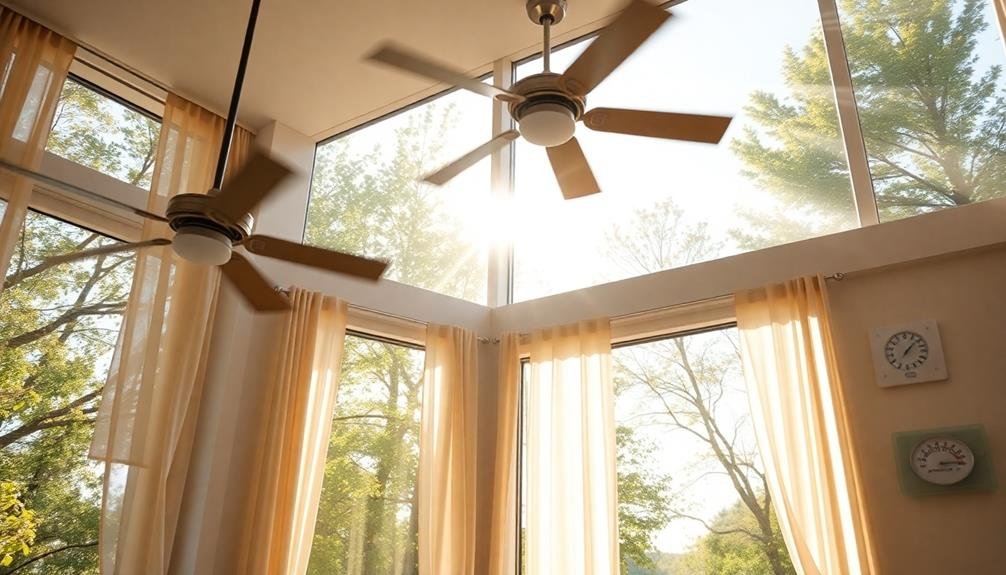
Harnessing nature's cooling power can greatly boost your home's energy efficiency. By utilizing natural cooling methods, you'll markedly reduce your reliance on energy-intensive air conditioning systems. These eco-friendly techniques work with the environment rather than against it, resulting in lower electricity consumption and smaller carbon footprints.
Natural cooling strategies like proper ventilation, shading, and thermal mass can cut your cooling costs by up to 50%. You'll notice immediate savings on your energy bills while also extending the life of your HVAC system. Unlike traditional air conditioners that constantly draw power, many natural cooling methods require little to no energy input.
Cross-ventilation and stack effect ventilation use wind and temperature differences to create airflow, cooling your home without electricity. Passive solar design and strategic landscaping block heat gain, reducing the need for artificial cooling.
Night flushing and thermal mass techniques store coolness, releasing it during hot days. Evaporative cooling, whether through water features or plants, can lower temperatures by several degrees without mechanical assistance.
Cost Savings Over Time
Over time, natural cooling methods can lead to substantial cost savings. You'll notice a significant reduction in your energy bills as you rely less on electricity-hungry air conditioning units.
Natural cooling techniques like proper insulation, strategic shading, and passive ventilation require minimal ongoing costs once implemented.
Consider the long-term financial benefits. While some natural cooling solutions may have higher upfront costs, they typically pay for themselves within a few years.
For example, installing energy-efficient windows or adding insulation might seem expensive initially, but you'll recoup those costs through lower utility bills.
You'll also save on maintenance and replacement costs associated with traditional AC systems. Natural cooling methods often have fewer moving parts and require less frequent repairs or replacements.
This means you'll spend less on service calls and new equipment over the years.
Don't forget about potential tax incentives and rebates for energy-efficient home improvements. Many governments offer financial perks for implementing natural cooling solutions, further offsetting your initial investment and accelerating your overall savings.
Environmental Impact Reduction
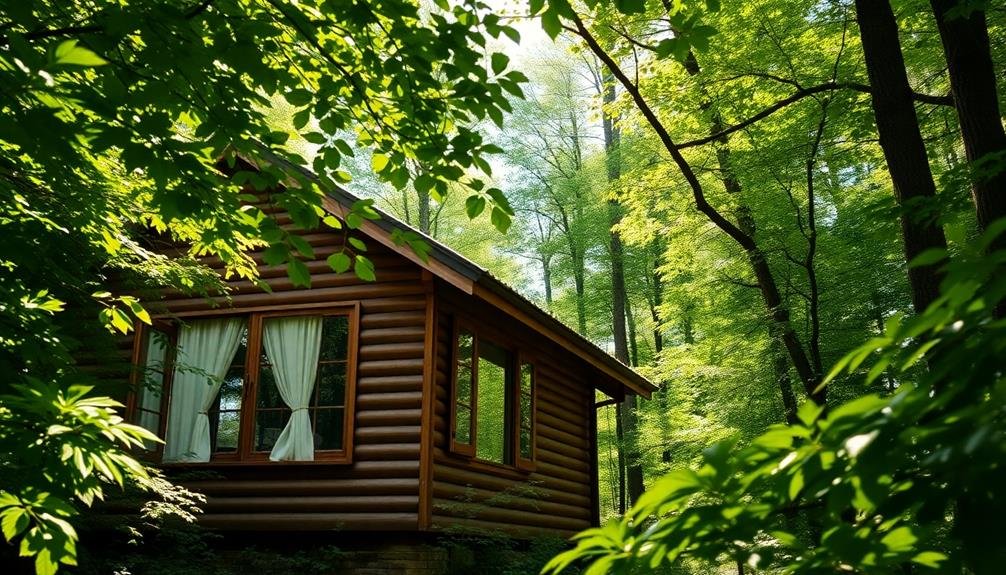
By adopting natural cooling methods, you'll greatly reduce your energy consumption.
You'll rely less on electricity-hungry air conditioning systems, which can drastically lower your carbon footprint.
Additionally, you'll minimize the use of harmful refrigerants, further decreasing your environmental impact.
Lower Energy Consumption
Natural cooling methods offer a significant advantage in reducing energy consumption and minimizing environmental impact. You'll find that these techniques can substantially lower your energy bills while keeping your home comfortable.
By utilizing natural ventilation, shading, and passive cooling designs, you're able to maintain a pleasant indoor temperature without relying heavily on electricity-hungry air conditioning systems.
Implementing strategies like cross-ventilation, night flushing, and thermal mass can help you harness the power of nature to cool your living spaces. You'll notice a dramatic decrease in your energy usage as you rely less on mechanical cooling systems.
This reduction not only saves you money but also lessens the strain on power grids during peak demand periods.
Moreover, you're contributing to a more sustainable future by choosing natural cooling methods. As you reduce your carbon footprint, you're helping to mitigate climate change and preserve natural resources.
Reduced Refrigerant Usage
Embracing natural cooling methods greatly reduces the need for refrigerants, which are notorious for their harmful environmental impact. When you opt for natural cooling, you're markedly decreasing your reliance on synthetic refrigerants like hydrofluorocarbons (HFCs) and hydrochlorofluorocarbons (HCFCs).
These chemicals, commonly used in traditional air conditioning systems, are potent greenhouse gases that contribute to ozone depletion and global warming.
By utilizing techniques such as cross-ventilation, thermal mass, and evaporative cooling, you're not only lowering your carbon footprint but also minimizing the risk of refrigerant leaks.
These leaks can be particularly damaging, as some refrigerants have a global warming potential thousands of times greater than carbon dioxide. Additionally, you're reducing the demand for refrigerant production and disposal, which often involves energy-intensive processes and potential environmental contamination.
Natural cooling methods also align with global efforts to phase out harmful refrigerants under international agreements like the Montreal Protocol and the Kigali Amendment.
Improved Indoor Air Quality
Natural cooling methods' impact on indoor air quality is often overlooked but significant. When you rely on traditional air conditioning, you're constantly recirculating the same air, which can lead to a buildup of pollutants, allergens, and even mold spores.
In contrast, natural cooling techniques like cross-ventilation and night flushing bring in fresh outdoor air, effectively diluting indoor pollutants.
You'll notice a marked improvement in your indoor air quality when you incorporate natural cooling. By opening windows strategically, you're not just cooling your space; you're also allowing stale air to escape and fresh air to enter. This constant air exchange helps remove volatile organic compounds (VOCs) emitted by furniture, carpets, and cleaning products.
Additionally, natural cooling reduces humidity levels, which inhibits the growth of mold and dust mites. You'll likely experience fewer respiratory issues and allergy symptoms as a result.
Moreover, natural cooling methods don't rely on artificial air filtration systems, which can sometimes become breeding grounds for bacteria if not properly maintained.
Harnessing Nature's Cooling Power
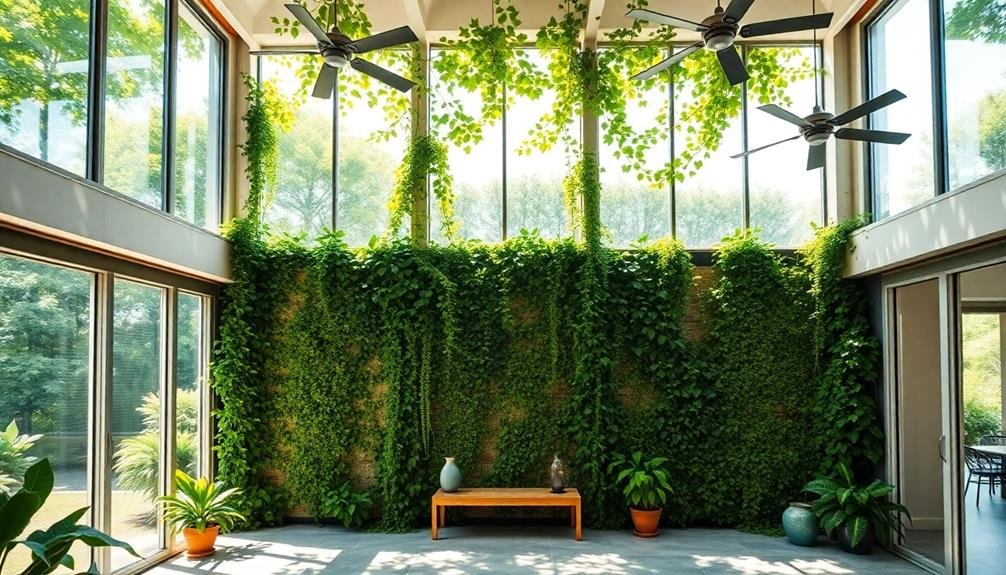
While modern technology offers numerous cooling solutions, nature provides its own powerful methods for temperature regulation. You can harness these natural cooling techniques to create a comfortable environment without relying on energy-intensive air conditioning systems.
One of the most effective ways to cool your space is by utilizing cross-ventilation. Open windows on opposite sides of your home to create airflow, pushing hot air out and drawing cooler air in. You can also strategically plant trees and shrubs around your property to provide shade and reduce heat absorption.
Consider incorporating these natural cooling elements into your home:
| Element | Benefit |
|---|---|
| Green roof | Insulates and cools |
| Light-colored exterior | Reflects sunlight |
| Awnings | Blocks direct sun |
| Water features | Evaporative cooling |
| Thermal mass | Absorbs heat during day |
Adaptability to Different Climates
Many natural cooling methods can be adapted to suit various climates, making them versatile solutions for temperature control.
In hot, dry regions, you'll find evaporative cooling techniques particularly effective. These methods use water's natural evaporation process to cool the air, providing relief in arid environments.
For humid climates, you can rely on ventilation strategies that promote air movement. Cross-ventilation and stack effect ventilation work well in these conditions, helping to remove excess moisture and create a more comfortable indoor environment.
In temperate zones, you'll benefit from a combination of techniques. Thermal mass can absorb heat during the day and release it at night, while shading devices protect against intense sunlight.
You can also utilize night purging to flush out warm air and cool your space naturally.
Coastal areas present unique opportunities for natural cooling. You can harness sea breezes through strategic building orientation and window placement.
Additionally, you'll find that underground cooling systems work effectively in various climates, as the earth's temperature remains relatively stable year-round.
Reduced Maintenance Requirements
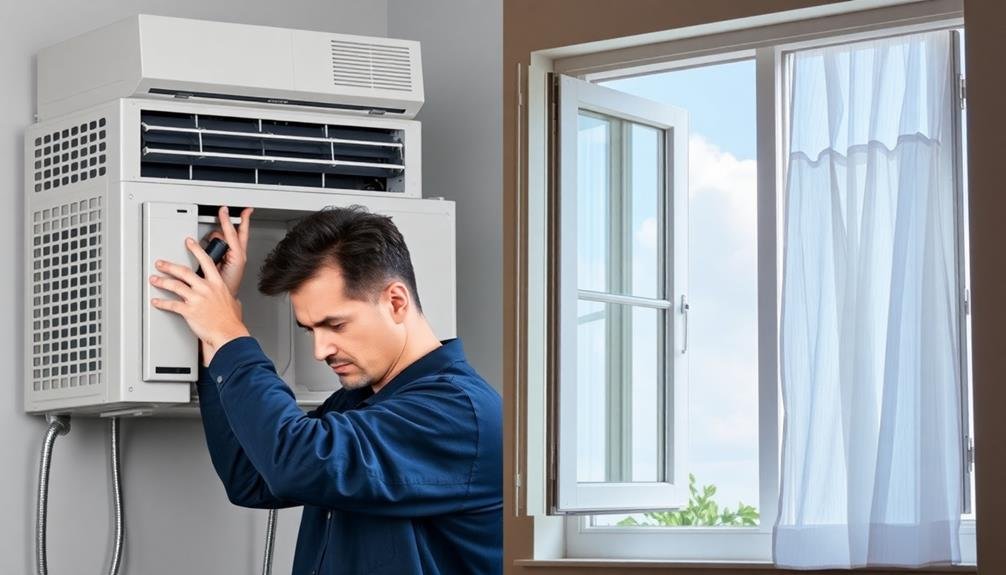
Implementing natural cooling methods often leads to reduced maintenance requirements compared to mechanical systems. You'll find that natural cooling solutions like passive ventilation, green roofs, and shading structures require minimal upkeep. Unlike air conditioning units, these systems don't have complex components that need frequent servicing or replacement.
Natural cooling methods rely on simple principles and durable materials, reducing the need for regular maintenance checks. You'll save time and money on repairs, as these systems are less prone to breakdowns. Additionally, you won't have to worry about refrigerant leaks or filter replacements, which are common issues with traditional AC units.
Here's a comparison of maintenance requirements:
| Maintenance Task | Natural Cooling | Traditional AC |
|---|---|---|
| Filter Changes | Not required | Every 1-3 months |
| Coil Cleaning | Not applicable | Annually |
| Refrigerant Check | Not applicable | Annually |
| System Inspection | Minimal | Twice yearly |
| Parts Replacement | Rare | Frequent |
Longevity of Passive Cooling Systems
One of the key advantages of passive cooling systems is their impressive longevity. Unlike traditional air conditioning units that typically last 10-15 years, passive cooling systems can endure for decades with minimal intervention.
You'll find that these systems, often built into the structure of your home, can last as long as the building itself.
Natural ventilation systems, such as strategically placed windows and vents, don't have mechanical parts that wear out. Similarly, thermal mass elements like concrete floors or stone walls can regulate temperature for the building's entire lifespan.
Even more sophisticated passive cooling methods, such as solar chimneys or geothermal heat exchangers, have few moving parts and can function efficiently for 30-50 years or more.
This extended lifespan translates to significant long-term savings for you. You won't need to budget for frequent replacements or major overhauls.
Additionally, the durability of passive systems means you're less likely to experience sudden cooling failures during heat waves.
Health Benefits of Natural Ventilation
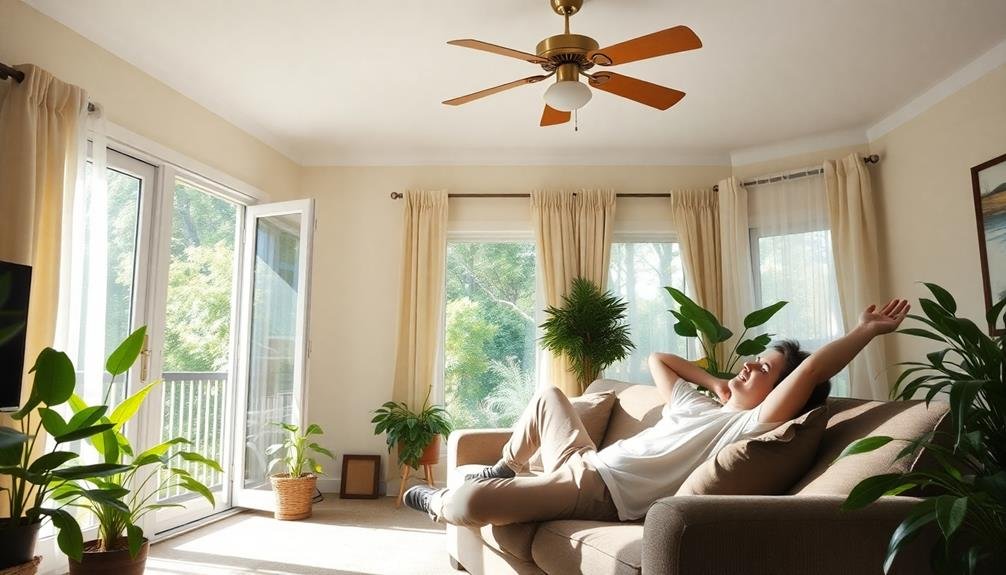
Natural ventilation offers three key health benefits that can greatly improve your indoor living environment.
First, it enhances indoor air quality by continuously replacing stale air with fresh outdoor air. This process removes pollutants, allergens, and excess moisture, reducing the risk of respiratory issues and allergies.
Second, natural ventilation helps regulate indoor temperature and humidity levels, creating a more comfortable living space. By allowing air to circulate freely, you'll experience fewer temperature fluctuations and avoid the dry air often associated with air conditioning systems. This can prevent skin irritation, dry eyes, and throat discomfort.
Lastly, exposure to natural airflow can boost your mental well-being. It provides a connection to the outdoors, reducing feelings of confinement and improving mood.
The gentle sounds of breezes and outdoor activity can also have a calming effect, potentially lowering stress levels.
Aesthetic Appeal of Green Solutions
Green cooling solutions don't just offer practical benefits; they can also transform your living space into a visually appealing oasis. When you incorporate natural cooling methods, you're adding elements that enhance the beauty of your home.
Living walls and green roofs, for instance, create stunning vertical gardens that cool your space while providing a lush, vibrant backdrop.
You'll find that strategically placed trees and shrubs not only provide shade but also add depth and texture to your landscape. Water features like fountains or ponds can create a serene atmosphere while naturally cooling the air around them.
Pergolas and trellises draped with climbing vines offer charming, shaded outdoor areas that seamlessly blend with nature.
Inside, you can use light-colored, natural materials like stone or wood to reflect heat and create a calming ambiance. Large windows and skylights allow for natural light and ventilation, making your space feel open and airy.
Integration With Sustainable Architecture
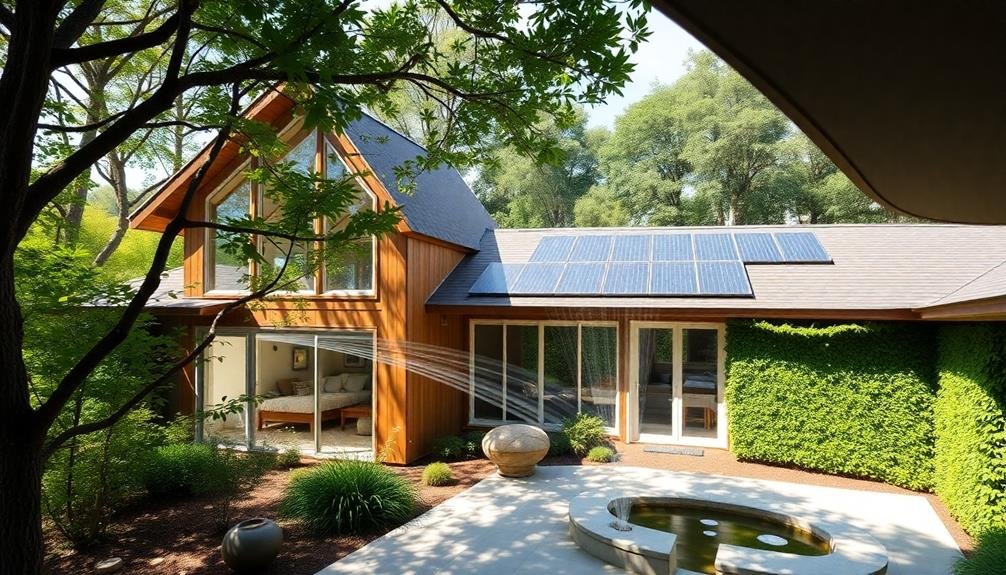
When you're designing a sustainable building, you'll find that natural cooling methods seamlessly integrate with eco-friendly architecture.
Passive solar design, which utilizes building orientation and materials to regulate temperature, works hand-in-hand with green roofs that provide insulation and reduce heat absorption.
You can further enhance these features by incorporating natural ventilation systems, which use strategically placed openings to create airflow and cool your space without relying on mechanical systems.
Passive Solar Design
Passive solar design forms the cornerstone of sustainable architecture, seamlessly integrating natural cooling methods into a building's structure. You'll find that this approach maximizes the use of natural energy sources to maintain comfortable indoor temperatures without relying on mechanical systems.
By orienting your building properly and strategically placing windows, you can harness the sun's energy for heating in winter while minimizing heat gain in summer. Thermal mass materials, like concrete or stone, absorb heat during the day and release it at night, helping to regulate indoor temperatures.
Here's a breakdown of key passive solar design elements:
| Element | Summer Function | Winter Function |
|---|---|---|
| Overhangs | Shade windows | Allow sun in |
| Thermal mass | Absorb heat | Release stored heat |
| Ventilation | Cool air circulation | Minimize heat loss |
| Insulation | Reduce heat gain | Retain warmth |
You'll also want to take into account using light-colored roofing materials to reflect sunlight and reduce heat absorption. By implementing these passive solar design strategies, you'll create a naturally cooler and more energy-efficient living space that's in harmony with its environment.
Green Roofs
Building upon the principles of passive solar design, green roofs offer another powerful tool in sustainable architecture's arsenal.
You'll find that these living rooftops not only provide excellent insulation but also contribute to urban biodiversity and stormwater management.
When you implement a green roof, you're fundamentally adding a layer of vegetation and soil to your building's top surface.
This natural barrier absorbs solar radiation, reducing heat gain in summer and heat loss in winter.
You'll notice a significant decrease in your energy consumption for cooling and heating.
Green roofs also act as natural air filters, improving air quality around your building.
They absorb carbon dioxide and release oxygen, helping to combat the urban heat island effect.
You'll benefit from reduced noise pollution too, as the soil and plants dampen sound waves.
Natural Ventilation Systems
Natural ventilation systems form the backbone of sustainable architecture's cooling strategies. These systems harness the power of natural air movement to cool buildings without relying on energy-intensive mechanical systems.
You'll find that architects integrate these solutions seamlessly into building designs, creating structures that breathe and adapt to their environment.
When you incorporate natural ventilation, you're not just reducing energy consumption; you're also improving indoor air quality and occupant comfort.
Cross-ventilation techniques use strategically placed windows and openings to create air paths through your building. Stack ventilation takes advantage of temperature differences, drawing cool air in at lower levels and expelling warm air through upper openings.
You can enhance these systems with features like atria, courtyards, and solar chimneys. These elements create pressure differences that drive air movement, even on still days.
Smart design also considers prevailing winds and local climate patterns to maximize efficiency.
Noise Reduction Advantages
How often have you struggled to sleep or concentrate due to the constant hum of air conditioning units? Natural cooling methods offer a considerable advantage in noise reduction, allowing you to enjoy a quieter, more peaceful environment.
Unlike traditional air conditioning systems with their noisy compressors and fans, natural cooling techniques like passive ventilation and thermal mass are virtually silent. You'll no longer be disturbed by the sudden start-up of an AC unit or its continuous drone throughout the day and night.
By utilizing natural airflow and strategically placed windows, you can achieve cooling without mechanical noise. Earth tubes and geothermal systems operate silently underground, delivering cool air without disrupting your living space.
Night purge ventilation quietly flushes out warm air while you sleep, ensuring a comfortable morning without the jarring sound of an AC kicking in.
The absence of noise pollution from cooling systems can considerably improve your quality of life. You'll find it easier to relax, concentrate on work, or enjoy conversations without raising your voice.
This noise reduction benefit extends beyond your home, contributing to a quieter neighborhood and reducing overall urban noise levels.
Compatibility With Smart Home Technology
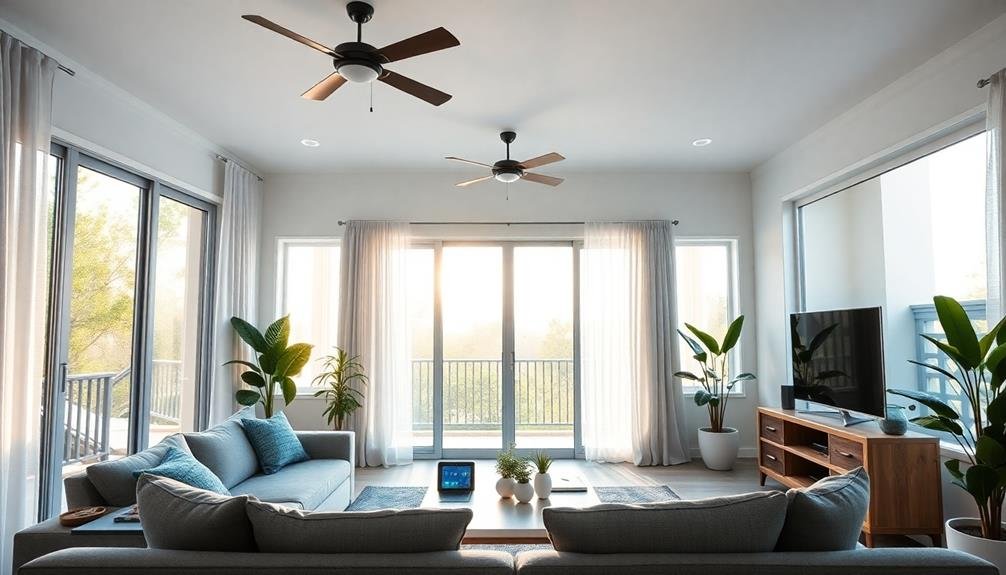
You can integrate natural cooling methods with smart home technology for enhanced efficiency.
Smart thermostats can optimize your home's cooling by learning your preferences and adjusting accordingly.
Voice-controlled systems allow you to manage your natural cooling setup hands-free, making it easier to maintain a comfortable environment.
Integration With Smart Thermostats
In light of the growing popularity of smart home technology, integrating natural cooling methods with smart thermostats has become increasingly feasible.
You can now seamlessly combine the benefits of natural cooling with the convenience and efficiency of smart home systems. Smart thermostats can automatically adjust your home's cooling strategy based on factors like outdoor temperature, humidity, and your personal preferences.
When you integrate natural cooling methods with smart thermostats, you'll enjoy several advantages:
- Optimized energy usage: Smart thermostats can determine the most efficient times to use natural cooling techniques versus air conditioning.
- Automated control: Your smart thermostat can open windows, activate ceiling fans, or adjust blinds without manual intervention.
- Customized comfort: The system learns your preferences and adjusts cooling methods accordingly throughout the day.
- Remote access: You can monitor and control your home's natural cooling systems from anywhere using your smartphone.
Voice-Controlled Cooling Systems
Beyond the integration with smart thermostats, voice-controlled cooling systems have emerged as a game-changer in natural cooling methods. You can now adjust your home's temperature using simple voice commands, making it easier than ever to maintain a comfortable environment while maximizing energy efficiency.
These systems allow you to control various aspects of your natural cooling setup, such as opening windows, activating ceiling fans, or adjusting motorized shades, all through voice commands to your smart home assistant. You'll appreciate the convenience of being able to make adjustments without getting up or reaching for your phone.
Voice-controlled systems also offer advanced features like scheduling and customized routines. You can create voice-activated scenarios that combine multiple cooling methods, such as "Goodnight" to close windows and activate nighttime ventilation.
These systems often integrate with other smart home devices, allowing for a more holistic approach to home cooling.
Frequently Asked Questions
Can Natural Cooling Methods Be Retrofitted Into Existing Buildings?
Yes, you can retrofit natural cooling methods into existing buildings. You'll find options like installing reflective roofing, adding shade structures, improving insulation, and incorporating passive ventilation systems. These upgrades can considerably enhance your building's energy efficiency and comfort.
How Do Natural Cooling Techniques Affect Property Values?
You'll likely see your property value increase with natural cooling techniques. They're eco-friendly and cost-effective, attracting environmentally conscious buyers. Plus, you'll save on energy bills, making your home more appealing in the real estate market.
Are There Any Government Incentives for Implementing Natural Cooling Systems?
Yes, you'll find various government incentives for natural cooling systems. These can include tax credits, rebates, and grants at federal, state, and local levels. Check with your local energy office to discover available programs in your area.
What Are the Limitations of Natural Cooling in Extreme Weather Conditions?
You'll find natural cooling less effective in extreme heat or humidity. It may not cool sufficiently during heatwaves or in tropical climates. You'll need to supplement with traditional AC methods when temperatures soar beyond natural cooling's capacity.
How Does Natural Cooling Impact Home Insurance Premiums?
You'll likely see lower home insurance premiums with natural cooling. It reduces the risk of mechanical failures and water damage associated with traditional AC systems. Plus, it's eco-friendly, which some insurers reward with discounts.
In Summary
You've seen how natural cooling outshines traditional air conditioning in numerous ways. It's more energy-efficient, cost-effective, and environmentally friendly. You'll enjoy better air quality, quieter spaces, and aesthetically pleasing solutions. By embracing nature's cooling power and integrating it with sustainable architecture and smart home tech, you're not just cooling your space—you're investing in a greener future. It's time to make the switch and feel the difference natural cooling can bring to your home and lifestyle.
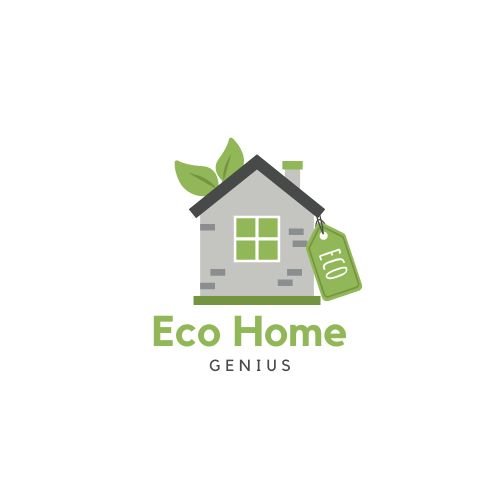

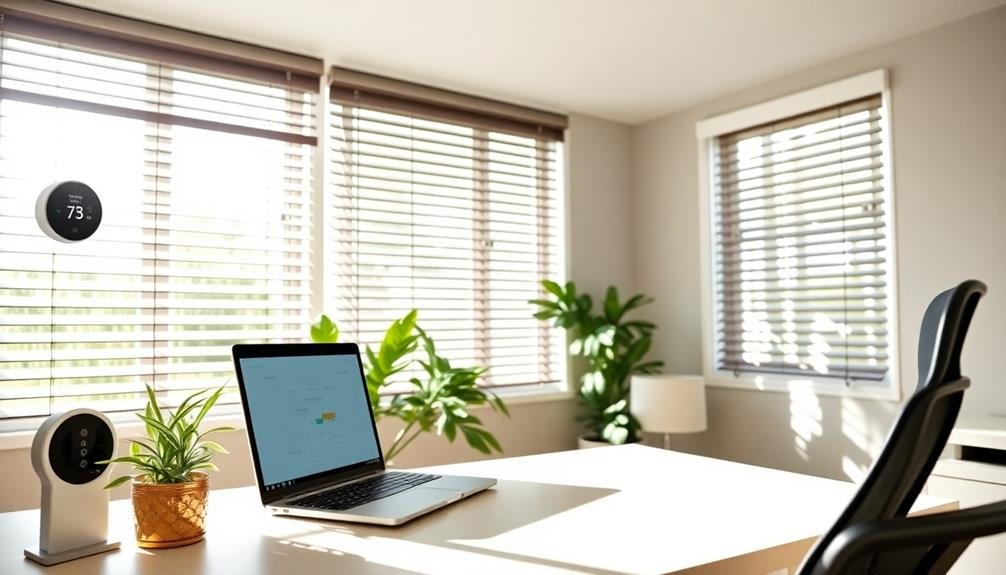
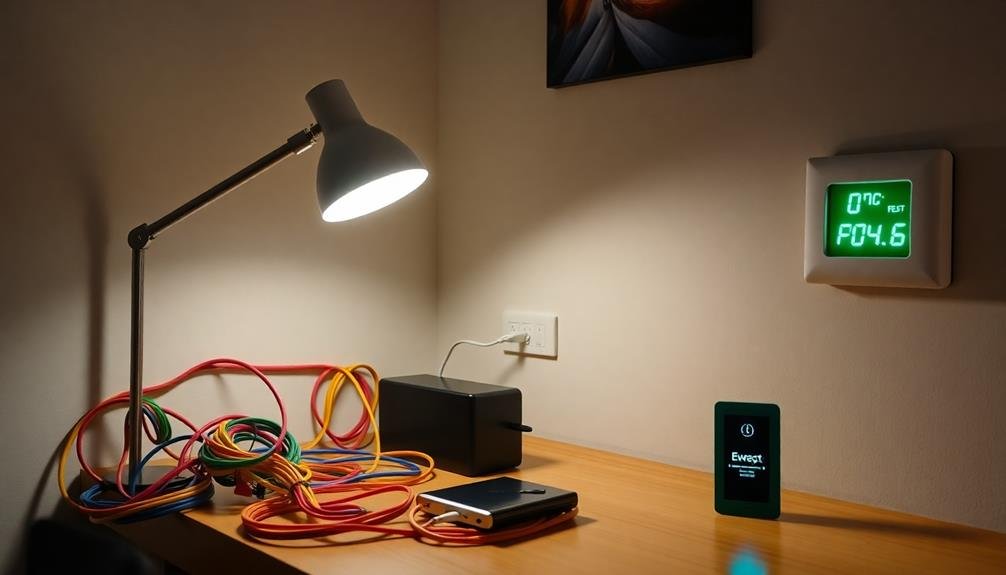
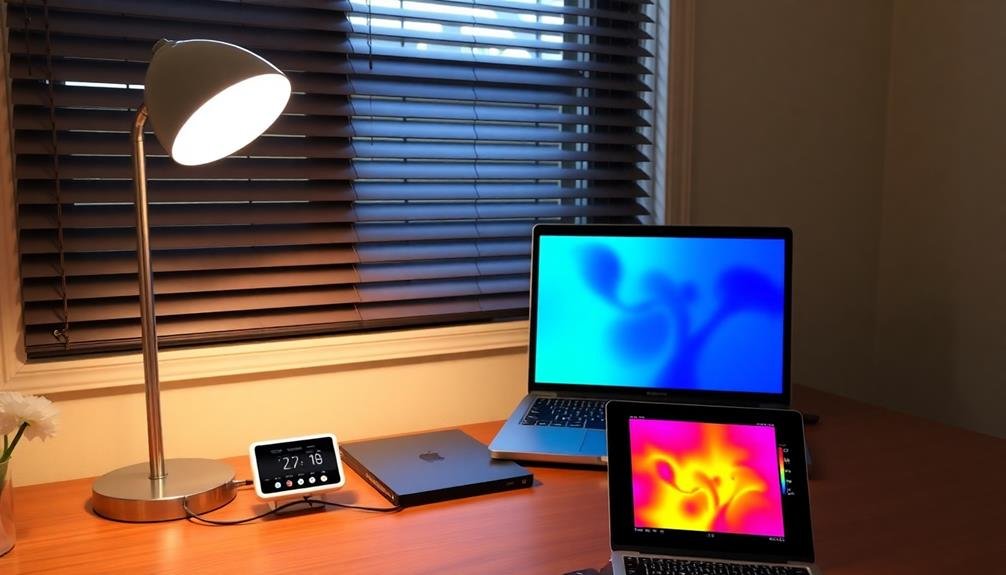
Leave a Reply